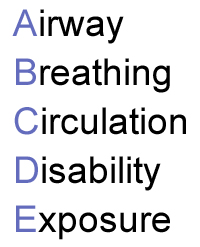
- Treatment of sinus tachycardia

Feedback
No, that is not right.
Sinus tachycardia is not an arrhythmia. It is a common physiological response to stimuli such as exercise or anxiety. Do not attempt to treat sinus tachycardia with cardioversion or anti-arrhythmic drugs as treatment is directed at the underlying cause.
Feedback
No, that is not right.
Sinus tachycardia is not an arrhythmia. It is a common physiological response to stimuli such as exercise or anxiety. Do not attempt to treat sinus tachycardia with cardioversion or anti-arrhythmic drugs as treatment is directed at the underlying cause.
Feedback
No, that is not right.
Sinus tachycardia is not an arrhythmia. It is a common physiological response to stimuli such as exercise or anxiety. Do not attempt to treat sinus tachycardia with cardioversion or anti-arrhythmic drugs as treatment is directed at the underlying cause.
Feedback
No, that is not right.
Sinus tachycardia is not an arrhythmia. It is a common physiological response to stimuli such as exercise or anxiety. Do not attempt to treat sinus tachycardia with cardioversion or anti-arrhythmic drugs as treatment is directed at the underlying cause.
Feedback
Yes, that is right.
Sinus tachycardia is not an arrhythmia. It is a common physiological response to stimuli such as exercise or anxiety.
Feedback
No, that is not right. Have another try.References
See chapter 11 of the ALS manual for further reading about the tachycardia algorithm.
Essentials: The 6-stage approach and the ABCDE approach
1. Is there any electrical activity?
2. What is the ventricular (QRS) rate?
3. Is the QRS rhythm regular or irregular?
4. Is the QRS width normal (narrow) or broad?
Any cardiac rhythm can be described accurately and managed safely and effectively using the first four stages.
[hrule]
5. Is atrial activity present? (If so, what is it: Typical sinus P waves? Atrial fibrillation? Atrial flutter? Abnormal P waves?)
6. How is atrial activity related to ventricular activity? (e.g 1:1 conduction, 2:1 conduction, etc, or no relationship)

Algorithm: The tachycardia algorithm

